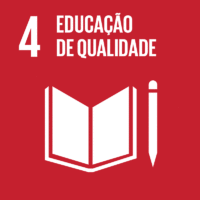Ciência-IUL
Publicações
Descrição Detalhada da Publicação
Robotics-based interventions for childrens creativity
C&C '21: Creativity and Cognition
Ano (publicação definitiva)
2021
Língua
Inglês
País
Estados Unidos da América
Mais Informação
Web of Science®
Scopus
Google Scholar
Abstract/Resumo
Robots have massively been introduced in children’s lives, showing promising effects on education and learning. Parallel to this, children’s creative levels show a decline related to different factors, including the standardized teaching and learning dynamics present in traditional school systems. This work aims to investigate if the activities with robots already present in schools affect children’s creativity levels. To study this, we compared creative levels of children across three study conditions: (1) Experimental condition 1: Children performed STEM activities in school by learning how to program robots; (2) Experimental condition 2: Children performed STEAM activities by learning how to design robots; (3) Control condition: Children engaged in a music class. We applied the Test for Creative Thinking-Drawing Production (TCT-DP), a validated test that measures creative potential, before and after the intervention. Our results showed that the creativity levels of children increased from pre- to post-testing, revealing the effect of all intervention groups in potentiating creativity. Additionally, results showed that creative levels were significantly higher in the control condition. This result was expected since this condition consisted of an artistic musical intervention where creativity is foreseen to be stimulated. When analyzing the effects of the interventions on the two dimensions of TCT-DP (i.e., adaptiveness and innovativeness), results showed that both the control and the programming condition stimulated innovativeness. This result seems to show that STEM activities can stimulate non-conventional ways of thinking, similar to creative activities such as a music class. While much has been studied about how STEM activities influence the knowledge of children, little is known if STEM also contributes to the stimulation of their creativity. This study promotes investigation in this topic and shows the potential of using robots to unlock creative potentials in children.
Agradecimentos/Acknowledgements
--
Palavras-chave
Creativity support environments,Computing tools,Creative process,Social robotics
Classificação Fields of Science and Technology
- Engenharia Eletrotécnica, Eletrónica e Informática - Engenharia e Tecnologia
- Psicologia - Ciências Sociais
Registos de financiamentos
| Referência de financiamento | Entidade Financiadora |
|---|---|
| UIDB/03125/2020 | Fundação para a Ciência e a Tecnologia |
Contribuições para os Objetivos do Desenvolvimento Sustentável das Nações Unidas
Com o objetivo de aumentar a investigação direcionada para o cumprimento dos Objetivos do Desenvolvimento Sustentável para 2030 das Nações Unidas, é disponibilizada no Ciência-IUL a possibilidade de associação, quando aplicável, dos artigos científicos aos Objetivos do Desenvolvimento Sustentável. Estes são os Objetivos do Desenvolvimento Sustentável identificados pelo(s) autor(es) para esta publicação. Para uma informação detalhada dos Objetivos do Desenvolvimento Sustentável, clique aqui.

 English
English

